Learn about the Medicinal Properties of Herbs
All plants contain phytochemicals. Medicinal herbs are plants which contain phytochemicals that have an effect on the body. Some herbs are used to treat mental symptoms like anxiety, restlessness, and sleeplessness. Others are used to treat physical complaints such as diarrhoea, stomach aches, and sinus complaints. Herbal plants have been in use across all societies for many thousands of years and are still widely used today along with synthetic medications. In fact, many synthetic drugs are based on herbs.
Add medicinal herbs to your plant knowledge
In this course you will:
- Study herb identification, growing and use for medicinal purposes
- Explore the possibilities for using medicinal herbs safely at home
- Explore business and work opportunities with medicinal herbs
- Be guided by highly qualified and expert tutors (including natural therapists, horticulturists and health scientists)
COURSE STRUCTURE
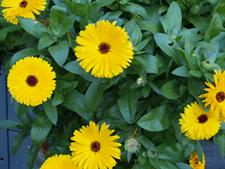 There are eight lessons as follows:
There are eight lessons as follows:
1. Introduction to Medicinal Herbs
- Scope and Nature of Herbal Medicine
- Being Cautious
- Growing and Knowing Medicinal Herbs
- Accurate Plant Naming
- Pronouncing Plant Names
- Finding Reliable Resources
2. Culture of Medicinal Herbs
- What is a Herb
- Soils and Nutrition
- Cultivation
- Fertilizing Herbs
- Compost, Mulch, Watering
- Propagation
- Pest and Disease
3. History
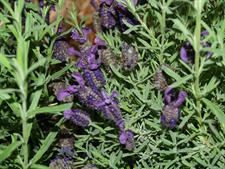 Introduction
Introduction- Hippocrates
- Chinese Herbalists
- Egyptian Influence
- Greek Influences
- The Dark Ages
- German and English Herbals
- Other Influences
4. Main Medicinal Herbs
- Introduction and Varieties to Grow
- Production Plan
- Improving Soil Fertility
- Cover Crops and Legumes
- Cultivation, Growing Methods, Compost
- Growing and using Ginger
- Garlic Culture
- Echinacea Culture
5. Herbal Remedies
- Alternatives, Anthelmintics, Astringents, Bitter Tonics, Calmatives, Carminatives and Aromatics, Cathartics, Diaphoretics, Dietetics, Demulcents, Emollients,
Expectorants, Nervines, Relaxants, Vulnerary Herbs
- Common Herbs with Medicinal Properties
- Nervines as Healing Agents
- Natural Chemicals in Plants and their Affect on Health; saponins, phenolglycosides, anthraglycosides, flavonoids, mustard oils, polysaccharides, prussic acid, glycosides, coumarin, tannins, bitters, essential oils, alkaloids, purines, essential minerals
- Chemistry of Herbs
- Herbal Sources for Human Nutrients
6. Preparing Herbal Remedies
- Infusions, Decoctions, Poultices
- Medical Preparations
- Problem of Accurately Formulating Herbal Medicines
- How herbalists used to work
- The Difference Today
- Harvesting Material for Herbal Preparations
- Post Harvest Handling of Herbs
- Post Harvest Preservation; Fresh, Modified Atmosphere Packaging
- Herbal Preparations for Teas, Rinses and Baths
- Producing Essential Oils; Water distillation, Steam distillation
- Uses for Eucalyptus Oil
7. Poisonous Plants
- Introduction
- Review of Plant Poisons
- Hazardous Herbs
- Carcinogens, Photosensitisers, Allergens, Hormone Like Affects, Teratogens, Respiratory Inhibitors, etc
- Toxic Plant Constituents
8. Developing a Production Plan
- Managing a Market Garden
- Deciding What to Grow
- Production Planning
- Types of Problems
- Standards
- Crop Schedules
- Farming Medicinal Herbs
- Production Requirements for Different Herbs
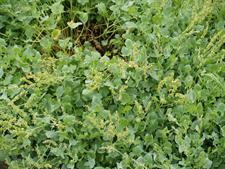 Distinguish between medicinal herbs in cultivation including many different genera and different varieties.
Distinguish between medicinal herbs in cultivation including many different genera and different varieties.- Discuss the history of medicinal herb usage.
- Compare the chemical components of different medicinal herbs in terms of their general affect on the human body.
- Prepare simple and safe herbal remedies in a domestic situation.
- Explain the potential dangers involved in dealing with plants.
- Prepare a schedule of cultural practices for a medicinal herb crop.
- Develop a production plan for a medicinal herb crop.
WHAT THE COURSE COVERS
Here are just some of the things you will be doing:
- Define the term "medicinal herb" according to both horticultural and naturopathic meanings.
- Compile a resource file of different sources of information regarding medicinal herbs.
- Distinguish between different plant families which common medicinal herbs belong to.
- Prepare a plant collection of different medicinal herb varieties.
- List ten different medicinal herbs which were often used more than one hundred years ago, but are no longer commonly used.
- Identify modern trends in the use of herbs in medicines in your country.
- Discuss the role of home remedies in modern society.
- Discuss the role of the naturopath in modern society.
- Summarise the history of medicinal herbs since early civilisation, to modern times.
- Explain the characteristics of different types of chemicals found in medicinal herbs.
- Write brief definitions to explain the mode of action of different herbal medicines.
- Write an essay describing the chemical actions which two different herbs have upon the human body.
- Explain various factors which can influence the effectiveness of active constituents of a herb.
- List herbal remedies derived from different commonly grown herbs.
- Identify the morphological parts of different herbs which are used medicinally.
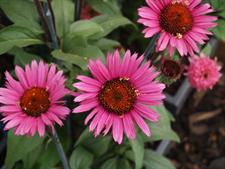 Explain thoroughly how to prepare different types of simple medicines, including a: *Poultice *Infusion *Decoction *Tincture.
Explain thoroughly how to prepare different types of simple medicines, including a: *Poultice *Infusion *Decoction *Tincture.- Develop a list of safety procedures to follow when preparing a given herbal medicine.
- Explain methods to administer different herbal medicines which are safe and appropriate for an unskilled person to make and use at home. (ie. medicines which do not have any dangerous risks if prepared or administered incorrectly).
- Describe commonly occurring plants which contain poisonous substances, using: *names (botanical and common) *dangerous parts of the plant *poisonous substances *mode of action of poison *remedy (if any).
- List herbs that should never be taken internally.
- List herbs which should never be used by pregnant women.
- List herbs which should never be used by children.
- Describe specific examples, precautions when dealing with unknown herb materials.
- Develop guidelines for the culture of a variety of medicinal herb.
- Explain natural pest and disease control methods for medicinal herb varieties.
- Prepare a sample of soil suitable for growing a specified herb variety in the open ground.
- Demonstrate propagation techniques for different medicinal herbs.
- Produce container plants of different medicinal herbs, propagating and growing on the plants to a marketable stage and condition.
- Record the development of medicinal herbs in a log including a summary of the condition of the plant, growth, and cultural practices carried out.
- Develop a list of criteria for selecting the most commercially viable variety of a nominated medicinal herb species available.
- List different varieties of a medicinal herb species which are readily available for purchase as "reliable" seed or tube stock.
- Compare different varieties medicinal herb species to determine a commercially viable variety to grow in your locality.
- List tasks to be undertaken in the production of a selected medicinal herb variety, including: *soil preparation *planting *growing practices *harvest and post harvest.
- Write a production schedule for a medicinal herb variety which designates tasks to be undertaken systematically at each stage of crop development.
- Explain the facilities which would be required to produce a specified commercial medicinal herb crop, including: *equipment *materials *land.
- Estimate the cost of producing a specified medicinal herb crop, itemising the cost components.
WHAT ARE MEDICINAL HERBS?
Medicinal herbs are plants which contain chemicals which have an affect upon the body (usually the human body, but sometimes animals as well). The affect of medicinal herbs may be mild or strong depending on a number of things including:
-
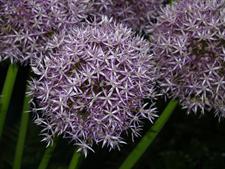
The species and variety of plant - NB: there can be subtle but important differences between two plants which may appear to be identical. For example many herbs now sold are cultivated varieties of the original species and may not have the chemical constituents of the species form.
-
Species that have the same common name but are totally different and unrelated - one could be highly poisonous the other benign
-
How it was grown ie. herbs that are over fertilised and watered tend to have a lower concentration of the important chemical constituents.
-
The part(s) of the plant used. (eg. root, leaf, stem, flower, fruit, mature or new growth, etc).
-
Harvest time - ie. time of day, time of year, weather conditions at the time, etc.
-
The preparation of the medicine (eg. as an oil, tablet, tea, ointment etc).
-
The storage of the medicine NB: some medicines store well, but generally fresh is best).
-
How it is used - (eg. some herbs may be safe to use externally, but the same herb may be a serious problem if taken internally. Some may be beneficial in a certain concentration, but dangerous in a different concentration).
Be careful about what you use and how you use it.
There are legal controls in most developed countries which apply to manufacture or prescription of medicines, and these regulations are usually relevant to herbal medicines. You cannot simply make and sell herbal medicines without satisfying legal requirements.
Some herbs are relatively safe to use and can be added to foods or baths quite safely by anyone who understands them; but other herbs can require a great deal of knowledge and expertise before they can properly and safely be used for medicinal purposes.
This course is a great starting point and can either enlighten you to a whole world of possibilities; or lay a foundation for further studies if that is where you choose to go.
Where To From Here?
This course is likely to be of value to people who have a keen interest in herbal plants and medicine. It will also appeal to anyone with a general interest in herbs. People who take this course are most likely those working in or aspiring to work in:
Nurseries
Horticulture
Parks & gardens
Herbal industries
Herbal medicine
Herb farms
The course will also be of value to people wishing to start a herb farm business.